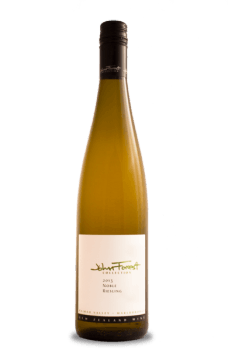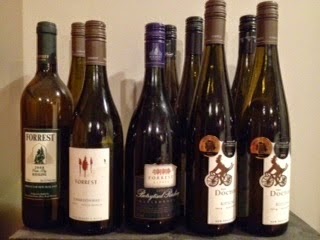Screwcaps and ageing
As it traditional around the world, once harvest is underway and crazy hours of 24/7 or similar are underway, a cellar tends to put on the food. Here at Forrest Wines, there’s always a hearty breakfast for the crew that started at 3am or 4am – bacon, eggs benedict, spicy beans or whatever. And for those on the late shift or all-night shift, there’s supper catered for.
Living with John and Brigid Forrest at their house on the estate over this harvest period I’ve been part of that too … and the very interesting collection of wines we’ve had with supper. Chris and Gus are the vintage supper boys, the only two on the late shift, and it’s been Chris on the whole who has brought over a couple of mystery bottles.

We also had a delicious bottle of the 2002 Botrytised Riesling – a wonderful sweetie that was still ageing very gracefully in its 75cl format
What’s this got to do with ‘screwcaps and ageing’? Well, the mystery bottles have tended to be from the Forrest Library. Then we’d play the game of ‘What grape?’, under 5 years, 5-10 years or 10-15? and perhaps drill down further. And what has been amazing is how young and vibrant very many of the old wines have tasted.
And yes, since 2001, they have all been under screwcap! Quelle surprise! Or perhaps, not really. I didn’t realise initially, but John in fact was one of the original four (along with John Belsham, John Stichbury and the late Ross Lawson) who founded the Screwcap Initiative in 2001. Now bottles under screwcap in the last ten years have increased from 100 million to three billion worldwide (out of a total of 7 billion total), while 90% of New Zealand’s wines are under screwcap closure. That’s a huge shift.
John’s fundemental point is why on earth would you firstly add an extra flavour, one that you don’t want ie cork, even a healthy cork, to your perfect wine? The original Initiative proved that these corks were not neutral by putting various different types of cork in different glasses of acidified water. All left some colour taint and flavour. Secondly why add in the gamble of closing your precious wine with a closure that, at best, is variable and, at worst, 10% of the time adds a fault – mustiness of varying degrees.
Hence Forrest’s move to screwcap in 2001.
So, back to what we tasted – the 2001 John Forrest Chenin Blanc (wow! honeyed candied fruit, apricot notes, buttery and a bit toasty – in top form, probably my favourite of the 3 weeks), John Forrest Chardonnay 2004 (creamy buttery fruit with super weight, balance and length and tasting youthful!), Tatty Boglar Pinot Grigio 2007 (this one was Northern Otago and had luscious peach fruit, with freshness and roundness), and Forrest Gewurztraminer 2003 (perhaps a tad light for Gewurz, but otherwise classic rose petal and spice). Only one we tried – a Chardonnay – was a tad oxidised. We even had a Forrest rosé 2009 – ancient for a rosé – that was very drinkable indeed. It still had gentle fruit, had lost a bit of zip, but was definitely very enjoyable imbibing.
The Doctor certainly attributes this freshness to the screwcap closure. He can’t imagine entrusting his best wines, indeed any of his wines, to the random nature of cork anymore. And that’s the same for most of what I’ve seen in New Zealand. Wairau River showed me their bottling line, bought in 2002, and where they had the capacity to insert corks into a bottle, they’d even bought the corks, but had not once used the facility.
Interestingly, however, at Auntsfield, site of Marlborough’s oldest vineyard dating back to 1860, Ben Cowley said he was putting their top Pinot Noir back under cork. They only produce a thousand cases of Pinot Noir, but he said it would open all sorts of new markets if the wine had a cork closure. That’s what customers want when they pay $80+ for a bottle. Indeed, he said touring Europe, France in particular, he found many sommeliers totally unfamiliar with screwcaps, attacking the closure with a corkscrew!

A selection of Forrest Wines, all under screwcap except the 2000 on the left
Secondly, he was up for corks in these top Pinot Noirs because he liked the romance of it, that every bottle will be unique and age just slightly differently … a more natural wine, perhaps. And certainly a different point of view from John.
At Rockford Wines in the Barossa, they also told me that their Basket Press Shiraz was closed with cork, allowing the wine to breathe a little and gain the complexity from ageing. So the jury is still out for some.
Meanwhile, John and Brigid went to their infrequent wine group gathering to enjoy a selection of blind bottles on Friday. Guess which was wine of the night? 1998 Forrest Chenin Blanc … with a cork closure. The first bottle of it they opened was a little oxidised, the second was sublime!





